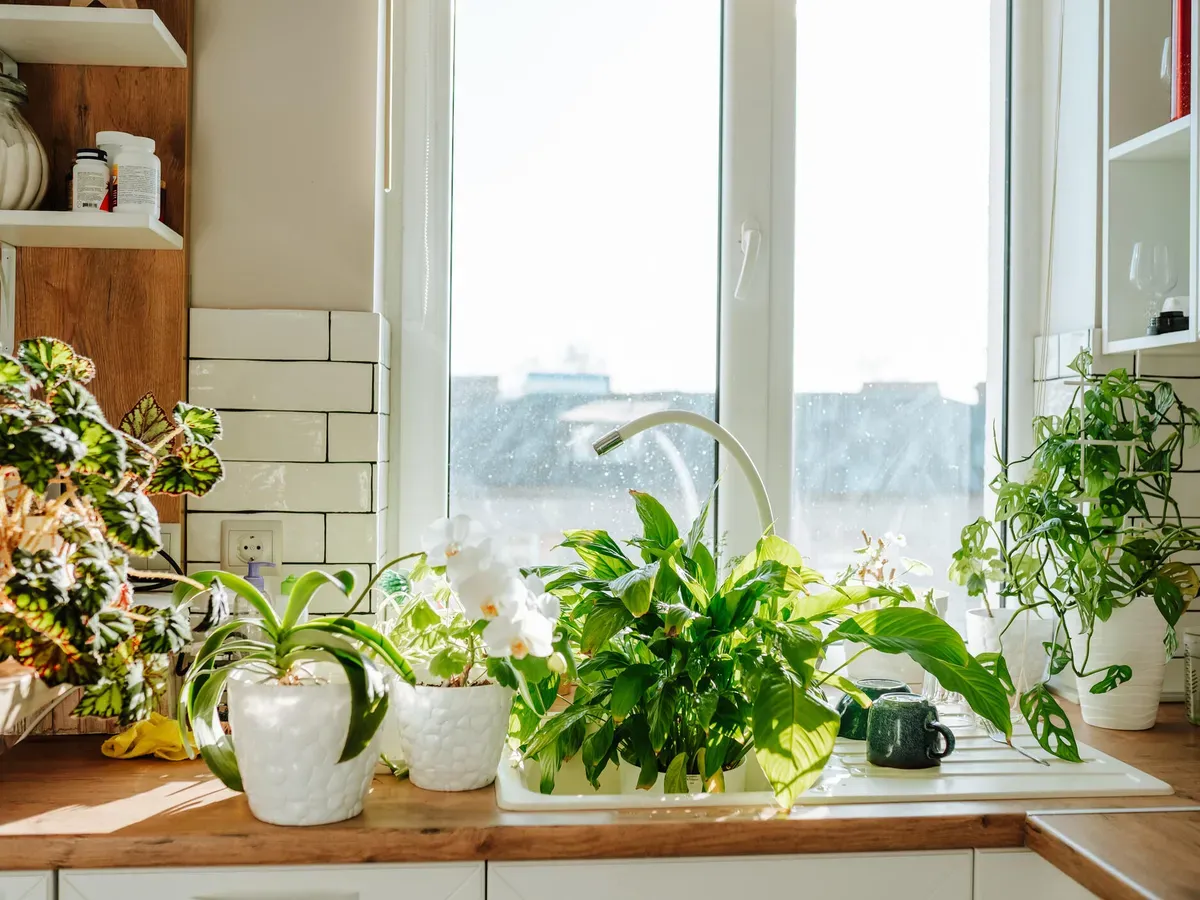

Creating a healthier and more inviting indoor environment starts with choosing the right houseplants. These green companions not only purify the air but also add a touch of natural beauty to your living space. Let’s learn more about this topic below with Dinosaur Game.
Indoor plants serve multiple purposes in our homes, from improving air quality to boosting mental well-being. NASA’s Clean Air Study has shown that certain plants are particularly effective at removing common indoor air pollutants, including benzene, formaldehyde, and trichloroethylene. These natural air purifiers work tirelessly to create a healthier living environment while adding aesthetic value to your space.
Beyond their air-cleaning capabilities, indoor plants have been proven to reduce stress levels, increase productivity, and enhance overall mood. The presence of greenery in our living spaces can create a more relaxing atmosphere, making our homes feel more like sanctuaries. Studies have shown that people who live with plants experience lower levels of anxiety and report higher levels of well-being.
Read more: How to Make Your Home More Eco-Friendly
The Snake Plant (Sansevieria) is renowned for its exceptional air-purifying abilities. This hardy plant is perfect for beginners as it requires minimal maintenance and can thrive in low-light conditions. Snake plants are particularly effective at removing formaldehyde, xylene, and toluene from the air, making them ideal for bedrooms as they continue their air-cleaning process at night.
Spider Plants (Chlorophytum comosum) are another excellent choice for indoor air purification. These fast-growing plants are non-toxic to pets and highly effective at removing carbon monoxide and other air pollutants. Their cascading leaves create an attractive display, and they’re known for being incredibly adaptable to various indoor conditions.
The Peace Lily (Spathiphyllum) combines air-purifying properties with elegant aesthetics. Its glossy leaves and white flowers add a sophisticated touch to any room while effectively removing ammonia, benzene, and formaldehyde from the air. Peace lilies thrive in low to moderate light conditions and communicate clearly when they need water by drooping their leaves.
Pothos (Epipremnum aureum) is a versatile vine that can transform any space into a cozy retreat. Available in various leaf patterns and colors, pothos can be trained to climb or cascade, making it perfect for shelves, hanging baskets, or wall-mounted planters. These hardy plants are excellent air purifiers and can adapt to different light conditions.
Successful plant care begins with understanding each species’ specific needs. Most indoor plants require well-draining soil and pots with drainage holes to prevent root rot. Regular monitoring of soil moisture, using the finger test method, helps establish an appropriate watering schedule. Remember that overwatering is more common than underwatering and can be more harmful to plants.
Proper lighting is crucial for plant health. While some plants tolerate low light, most thrive in bright, indirect sunlight. Consider your home’s natural light patterns when choosing plant locations. Rotate plants regularly to ensure even growth, and dust leaves periodically to maximize their ability to photosynthesize and clean the air.
The placement of air-purifying plants can significantly impact their effectiveness. Consider placing plants in areas where you spend the most time, such as living rooms and bedrooms. For optimal air purification, use one medium to large-sized plant per 100 square feet of indoor space. Group plants together to create humidity zones that benefit moisture-loving species.
Some rooms benefit more from specific plants than others. Bathrooms are ideal for humidity-loving plants like Boston Ferns, while kitchens can benefit from herbs that both purify air and serve culinary purposes. Home offices can be enhanced with concentration-boosting plants like bamboo palms and rubber plants.
Indoor plants require different care routines throughout the year. During growing seasons (spring and summer), increase watering frequency and provide diluted fertilizer monthly. In winter, reduce watering and hold off on fertilizing as most plants enter a dormant phase. Maintain consistent indoor temperatures and protect plants from cold drafts near windows or doors.
Monitor humidity levels, especially during heating season when indoor air becomes dry. Use humidity trays, grouping plants together, or running a humidifier to maintain appropriate moisture levels. Prune dead or yellowing leaves regularly to encourage healthy growth and maintain aesthetic appeal.
Read more: 10 Simple Swaps for a Greener Lifestyle
Even with proper care, indoor plants can encounter issues. Yellowing leaves often indicate overwatering or poor drainage, while brown leaf tips might suggest low humidity or excess fertilizer. Watch for signs of pest infestation, such as webbing, spots, or sticky residue on leaves. Address problems promptly using appropriate organic or chemical treatments.
If a plant isn’t thriving in its current location, don’t hesitate to relocate it. Monitor its response to different light conditions and adjust care routines accordingly. Remember that some leaf drop is normal when plants adjust to new environments or seasonal changes.
Incorporating air-purifying plants into your home decor offers numerous benefits beyond aesthetic appeal. By selecting appropriate plants, providing proper care, and positioning them strategically, you can create a healthier, more inviting living space. Start with a few easy-to-care-for species and gradually expand your indoor garden as you gain confidence in your plant-keeping abilities. Remember that each plant contributes to cleaner air and a cozier atmosphere, making your home a true sanctuary for both physical and mental well-being.